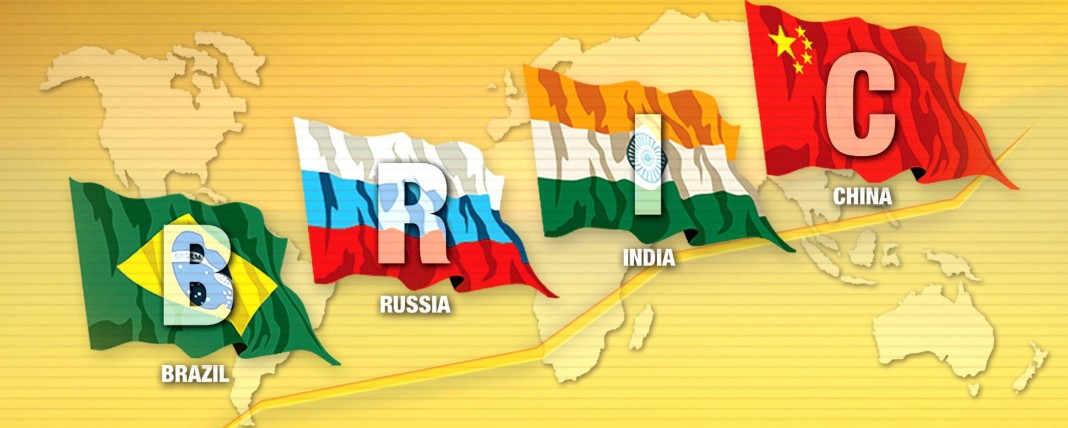by Leonardo Servadio
In the aftermath of the signing of the agreement for an International development bank, economic exchanges among the BRICS countries are growing: countries that for different reasons are being marginalized in the context of the Western economies look and find interesting opportunities in mutual relations. Here are two examples, reported by AFP Wednesday Sept. 3: Russian President Vladimir Putin signed economic agreements with Mongolia, which in turn is vastly expanding its trade relations with China; at the same time, in the American continent China is investing massively in debt-torn Argentina.
Just two examples of the on-going shift in the economic power balance towards the Far East.
Putin, reports AFP, while currently embroiled in the crisis in Ukraine which has strained his relations with the West, is looking for new markets in the face of threatened sanctions by the EU and US. He and his Mongolian counterpart Tsakhia Elbegdorj watched Sept. 3 as officials signed 15 accords covering sectors including transport and infrastructure, mining, education, and communications.
While Elbegdorj, called Putin’s visit “a new page in the history of the cooperation between our two countries”, the Russian President said “critical steps” had been taken to further their relationship.
During the Soviet era Ulan Bator was a satellite of Moscow’s, but Mongolia freed itself of its Communist regime in 1990 and emerged as a vibrant parliamentary democracy. Now its own economic growth is flagging after the world-beating performances of recent years, and it suffers from rising inflation, a plunging currency and a 70 percent drop in foreign direct investment in the first half of this year.
Both countries are rich in resources – while Mongolia has huge coal and copper deposits, Russia provides most of its fuel and electricity supplies – and Putin has periodically moved to reaffirm Russia’s interests in Asia and the Pacific.
But China is by far Mongolia’s biggest economic partner. Two-way trade between Mongolia and Russia was worth more than $1.6 billion in 2013, reports said, but with China it was four times higher, accounting for more than half Mongolia’s commerce.
When Chinese President Xi visited, the two countries set out plans almost to double trade to $10 billion by 2020, Beijing’s official news agency Xinhua reported.
Despite their shared Communist past, Russia “has long lost the game of influence over Mongolia”, said Sergey Radchenko, an international politics specialist at Aberystwyth University. “Moscow forgave Mongolia’s (Soviet era) debt and has tried to regain lost ground by inserting itself into various (mining and infrastructure) projects,” he told AFP.
“Yet these are hardly sufficient to provide Russia with the sort of leverage in the country that Putin might have expected a few years back… It just does not have the leverage, and what little it has, is set to diminish in coming years as China’s economic pull continues to bear weight on Mongolia.”
China’s continued push to expand its international economic influence is signaled by the fact that after sort of monopolizing Africa’s foreign investments, is now increasing its connections to Latin America. As AFP reports, China will take part in the construction of Argentina’s fourth nuclear power plant, Buenos Aires announced Wednesday.
The China National Nuclear Corporation (CNNC) will pour $2 billion into technical support and logistics to build Atucha III, the government said on its website following the signing of a deal in
Beijing. Two of Argentina’s three current plants – Atucha and Atucha II – are located near Buenos Aires while a third, Embalse, is in Cordoba province.
Argentina largely depends on natural gas and oil for its energy needs. Nuclear power only accounts for about 10 percent of electricity production.
It is still unclear how much power Atucha III will generate.
China is in the midst of an investment spree in Latin America, and has poured some $23 billion into oil and gas, mining, finance and food exports in Argentina alone.
[simpleazon-link asin=”B008EQEC5G” locale=”it”]The Chinese Economy: Transitions and Growth (English Edition)[/simpleazon-link]
[simpleazon-link asin=”B0063820OW” locale=”it”]The Growth Map: Economic Opportunity in the BRICs and Beyond[/simpleazon-link]
Pubblicazione gratuita di libera circolazione. Gli Autori non sono soggetti a compensi per le loro opere. Se per errore qualche testo o immagine fosse pubblicato in via inappropriata chiediamo agli Autori di segnalarci il fatto e provvederemo alla sua cancellazione dal sito





